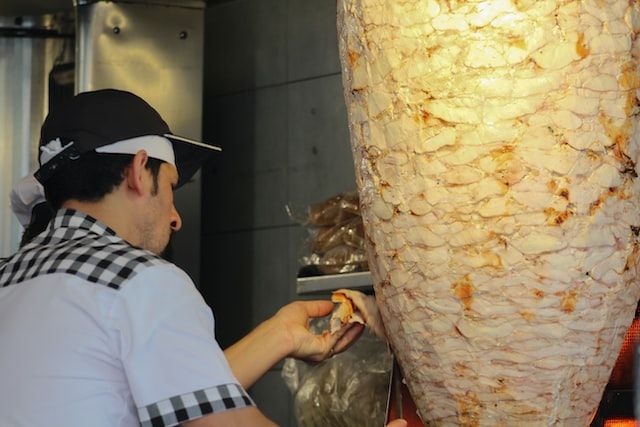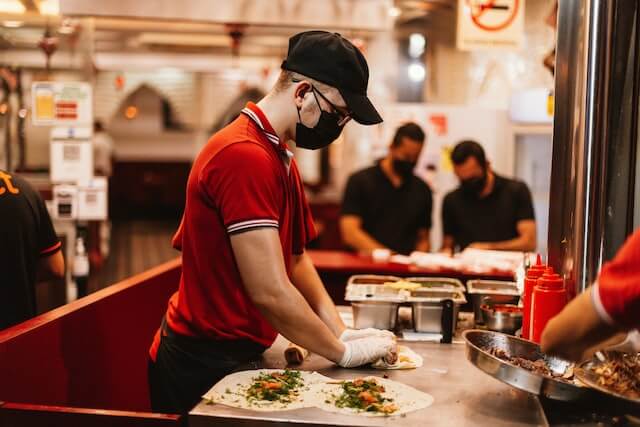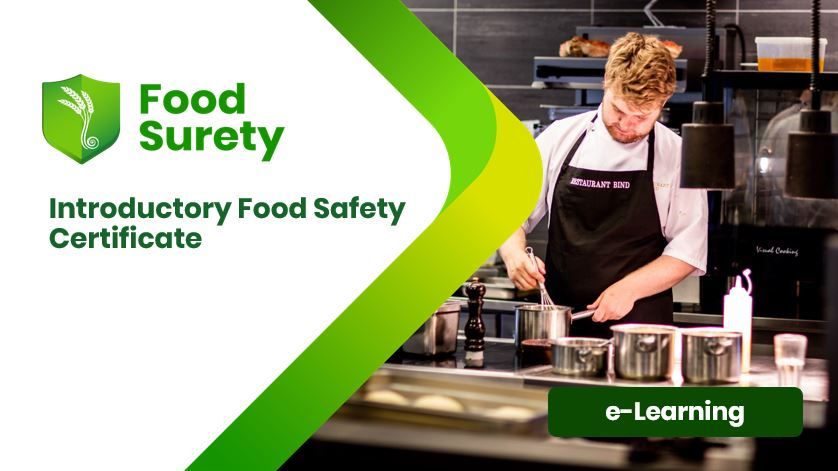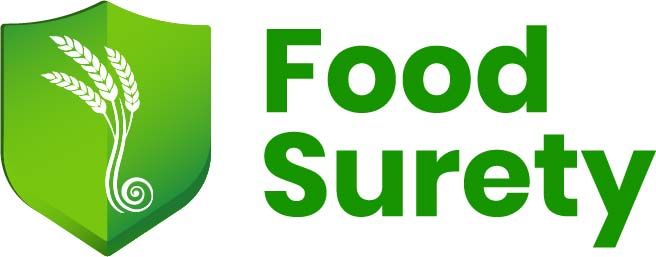Restaurants, kebab and Salmonella
Introduction - Salmonella Outbreak Related to Kabab Take Aways
Here we are at the beginning of 2023, I'm going through the food safety news and I'm starting my day with an “Oh no” moment reading a particular article titled “Two Salmonella outbreaks linked to chicken in Australia”. In the article written for the Food Safety News, Joe Witworth said:
“Two Salmonella outbreaks have been found to be associated with kebab shops in an Australian state with people falling sick in 2021 and 2022, according to recent reports.
The first included 12 cases of Salmonella Agona, with nine patients reporting eating chicken from the same kebab shop in Canberra, in the Australian Capital Territory. The second involved two cases of Salmonella Virchow who both ate chicken from another kebab shop. Environmental samples detected Salmonella linked to the respective outbreak cases.
Investigations identified similar food safety issues at both businesses, including improper cleaning of kebab shaving equipment and serving cut rotisserie meat without further cooking.”
This is no good, to say the least, especially when you know that out of the 12 people who reportedly were affected, five ended up in the emergency department and one needed hospitalisation. So, let's talk about Salmonella.
What is Salmonella?
Salmonella is a non-spore-forming, facultative anaerobes, bacterium, there are two species of Salmonella: Salmonella bongori and Salmonella enterica which is further divided into six subspecies with more than 2,600 serotypes some of which can cause illness. Salmonella serotypes can be:
- Nontyphoidal serotypes which by the way are zoonotic, can move from human to human and from animal to human. Usually invading the gastrointestinal tract causing salmonellosis
- Typhoidal serotypes which only move from human to human and can cause foodborne infection. It can invade the bloodstream and other organs and even secrete endotoxins.
What Are The Symptoms of Salmonella Illness?
Salmonella infections usually affects older adults, children, and immunocompromised individuals. Symptoms usually appear within 6 to 72 hours after eating contaminated food and last for four to seven days. Most people don’t need hospitalisation but in some cases especially for those with weakened immune systems, it can be life-threatening. Common symptoms can include:
- stomach cramps and stomach pain
- diarrhoea
- fever
- headache
- nausea
- vomiting.
Interesting Facts Related to Salmonella Illness
- As per the Ministry of Health in New Zealand, the period of communicability does vary, usually several days to weeks but about one percent of infected adults and five percent of infected children under five years of age excrete Salmonella spp. for more than one year.
- As per the Centers for Disease Control and Prevention in the United States, for every Salmonella illness case confirmed by a laboratory test, it is estimated that 30 cases are not reported. Only a small percentage of people who eat contaminated food and get food poisoning actually go to the doctor and submit a sample to a laboratory.
How to Produce Doner Kebabs and Shawarma Safely?

As per the guidelines of the Simply Safe and Suitable Food Control Plan (FCP) template from the Ministry for Primary Industries (MPI) in New Zealand, there are many risks and controls associated with producing doner kebabs or Shawarma, for example:
- Use fresh raw meat and store it refrigerated at below 5°C until needed for food preparation, remember to separate raw or undercooked meat from cooked meat.
- Use thinly sliced meats when preparing the spits
- The length of the formed block of raw meat or raw chicken must not be longer than the length of the burners. This is important when preparing food to ensure it is cooked properly and avoid serving undercooked poultry
- The outside of the doner kebab must be thoroughly cooked before thin slices of meat are shaved from the outside surface.
- When minced meat spits are cooked from frozen, shaved meat must undergo further cooking on a griddle/hot plate prior to use.
- Any shaved meat that has not been cooked thoroughly must be further cooked by using a hotplate or grill. Thorough cooking is key to foodborne illnesses.
- If the doner kebab or shawarma has not been completely used at the end of service you must:
- throw it away, or
- carve off any part of cooked meat from the skewer. Cook thin slices on the grill/hotplate. Cool the cooked shaved meat, cover it and store it in the fridge. The next day it may be reheated and served.
- You must cool the raw meat that remains on the skewer to room temperature or 21°C (whichever is colder) within two hours and to below 5°C within a further four hours
In the foodborne illnesses cases discussed at the beginning of this blog post, two issues were identified, the cleanliness of the kabab electric meat cutter and the cleaning cloths used in the restaurants and food outlets. These have tested positive for Salmonella! This means it is contaminated and spreading the contamination onto the food contact surfaces and the food in the restaurant. This can harm and even threaten the life of your team members and customers.

kebab restaurants or shawarma restaurants have prepared and sold doner kebab for ages and it was just fine! Someone might say.
True, but back in the day electric meat cutters were not used, they used a special knife or sword that they cleaned very well. The kebab or shawarma restaurant had a specialised person who is trained, and they knew exactly what they are doing which is challenged by high staff turnover these days. Probably, the production scale was different too. So, new challenges require new controls, as simple as that.
True, but back in the day electric meat cutters were not used, they used a special knife or sword that they cleaned very well. The kebab or shawarma restaurant had a specialised person who is trained, and they knew exactly what they are doing which is challenged by high staff turnover these days. Probably, the production scale was different too. So, new challenges require new controls, as simple as that.
How To Safely Use and Clean The Electric Meat Cutter In Your Kebab Takeaway?
Well, to start with, make sure you choose one that is suitable for your use, and well designed, and train your food handlers to clean and sanitise it as per the manufacturer’s instructions and good food hygiene practices.
What is The Super Cleaning Cloth?
I always talk to food handlers about the “super cleaning cloth” or the “super tea towel”. It is a cleaning cloth that is usually oily, and smelly and has threads sticking out, used to clean any food contact surface in the restaurant. This super cleaning cloth is usually used for extended times and requires minimal or no cleaning!!
If you have one, dump it and don't buy another one please, just use a regular cleaning cloth that you clean between uses and a maximum of every couple of hours, or better use disposable towels to prevent cross contamination.
Cleaning and sanitising are important and training your team members on basic food safety practices like cleaning and sanitising, allergen management food storage, preparation, cooking, and serving is critical as it is a compliance requirement and it will protect consumers and the food business.
At Food Surety we have created a practical, on-demand Food handler Food Safety Training course that can be accessed 24/7 from anywhere so food handlers do what is right with confidence.
If you have one, dump it and don't buy another one please, just use a regular cleaning cloth that you clean between uses and a maximum of every couple of hours, or better use disposable towels to prevent cross contamination.
Cleaning and sanitising are important and training your team members on basic food safety practices like cleaning and sanitising, allergen management food storage, preparation, cooking, and serving is critical as it is a compliance requirement and it will protect consumers and the food business.
At Food Surety we have created a practical, on-demand Food handler Food Safety Training course that can be accessed 24/7 from anywhere so food handlers do what is right with confidence.

Conclusion
Salmonella is a serious food safety hazard that can be related to raw meats, raw eggs, contaminated water, dairy products, and many other foods that can carry salmonella bacteria, it can cause serious illness or food poisoning and can be life-threatening.
Restaurants, and any food business really, need good awareness and understanding of potential food safety risks, develop suitable processes and work instructions, train their food handlers and managers on the basics of safe food handling and ensure compliance with food regulatory requirements, this is how you protect consumers and the brand from risks associated with such life-threatening foodborne illness.
For more tips on creating and maintaining a positive culture or if you are looking for a food safety training provider? Please contact us today!
Restaurants, and any food business really, need good awareness and understanding of potential food safety risks, develop suitable processes and work instructions, train their food handlers and managers on the basics of safe food handling and ensure compliance with food regulatory requirements, this is how you protect consumers and the brand from risks associated with such life-threatening foodborne illness.
For more tips on creating and maintaining a positive culture or if you are looking for a food safety training provider? Please contact us today!
Disclaimer:
The information contained in this article is based on research done in the last
months and the author's personal experience and opinions. It is not intended to
represent the view of any organization they work for or collaborate with.
The authors will not be held liable for the use or misuse of the information
provided in the article.
Latest From Food Surety Blog

Food Surety Limited is a New Zealand-owned training and consultancy company. Our purpose is to support food professionals and their businesses doing what's right with confidence so they are successful and fulfilled protecting consumers everywhere.
Food Surety Limited
